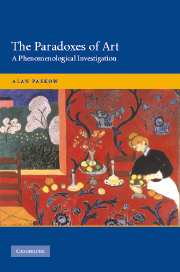5 - For and Against Interpretation
Published online by Cambridge University Press: 27 March 2010
Summary
In the previous chapter especially, I sought to define a way of viewing paintings that calls for our entering into and dwelling with their depicted subworlds. In this recommended phenomenological approach, I emphasized the importance of crediting our personal experience of artworks, the sensuous and affective dimension that takes place in our first-person engagement with them. I tended to give less credit to the importance of re-viewing and rethinking the meanings of paintings, as possibly otherwise than they at first appear, or, simply put, in the light of interpretive strategies. This conceptual imbalance needs in this last chapter to be reweighted because, as is perhaps obvious enough, we do “place” artworks, attempting thereby to overcome little shocks of novelty by “pacifying” them according to some framework of interested interpretation. How, then, are we to understand our interpretive activity generally, and how might it be related to our logically and temporally prior prereflective experience of an artwork?
The tangle of issues involved in the whole enterprise of interpreting artworks is daunting. Hundreds of volumes have been written on questions concerning the nature of interpretation in the field of philosophy alone. Now consider for a moment just a sector of the whole “problematic of interpretation,” a mere microcosm of epistemological conundrums entailed by questions that will follow shortly. Let us gaze at a mere part of a scene painted by Vermeer. (See “Woman in Blue Reading a Letter,” Plate 4).
- Type
- Chapter
- Information
- The Paradoxes of ArtA Phenomenological Investigation, pp. 204 - 250Publisher: Cambridge University PressPrint publication year: 2004



